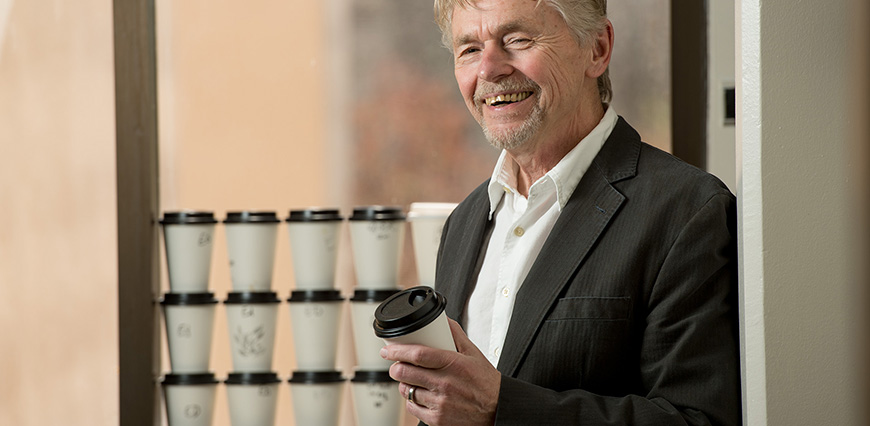
Above: Dr. Ed Hoover sees patterns in nature, in society, and even in a collection of coffee cups outside his office. He was inducted into the National Academy of Inventors in April. (John Eisele/CSU Photography)
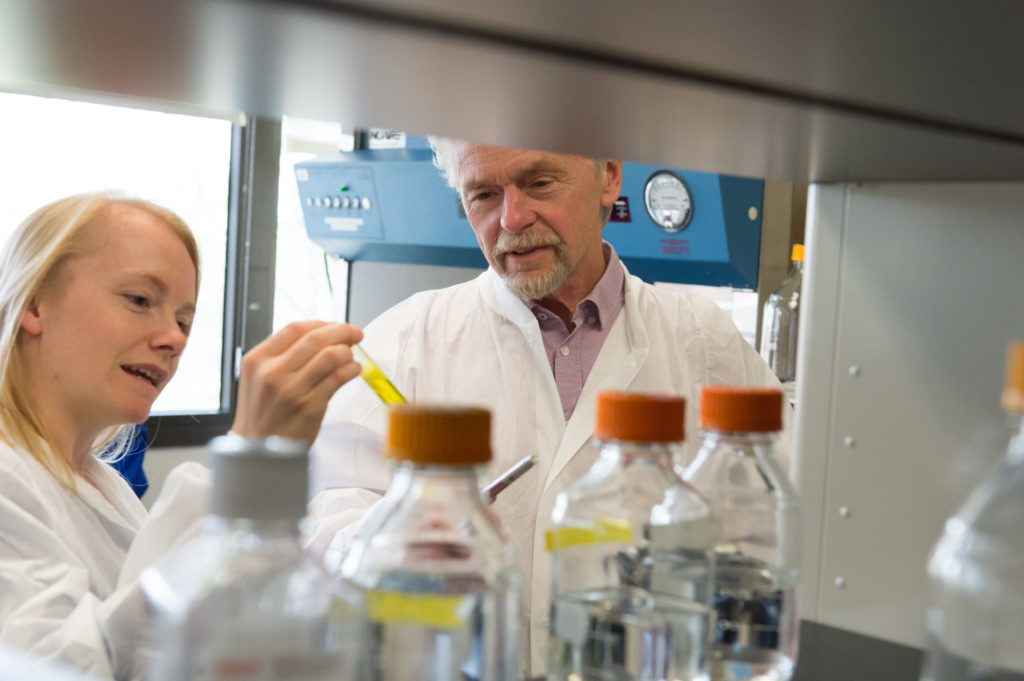
In a five-decade career filled with inquiry and invention, Dr. Edward Hoover can now add the official title of “Fellow of the National Academy of Inventors” to his list of accomplishments. It’s a long one:
- CSU University Distinguished Professor
- National Academy of Sciences Fellow
- Feline leukemia vaccine inventor
- Founder of the CSU Prion Research Center
- $40 million in extramural research funding
- 20 patents
Hoover, a professor in the Department of Microbiology, Immunology and Pathology, was named to the National Academy of Inventors in April, but his proudest accomplishment is his work in the classroom. “The most important thing I have ever done is mentor students,” he said. As he enters transitional retirement, something he admits he’s “not very good at,” he’s becoming more and more philosophical. In a wide-ranging interview, he recalled early influences, explained why he stacks coffee cups on his windowsill, and mused on the relationship of art and science.
You have a body of work within your field, as well as larger philosophical insights. Have you thought about writing a book?
Well, that’s one of those phrases you can say, “You need to write a book.” Then it comes to writing the book and you think “what would be in that book and who would want to read it?” That’s one of the frustrations of being old, is that you’ve learned all this stuff but you don’t really know what you can do with it. There’s no way to really pass it on efficiently.
I always think of my mother’s view of those sorts of things. She was not appreciative of blowhards. But overall, I’m a hybrid of “just do it” from my mother and to think about it and view it in a philosophical way like my father. It took me a while to realize the benefit of each.
Did you always want to be a veterinarian?
No, but I was exposed to it from the time I was 4 years old, living above McKillip Animal Hospital on north Clark Street in Chicago; we worked and lived there for our rent. Being a kid who was raised in Chicago in a working class family, I did a lot of dog schlepping.
Did that make you not want to be a vet?
It could have gone both ways. I got an appreciation for animals and their positives but I got a dis-appreciation for the cacophony of loud barking dogs.
So what did you want to be?
I started out as an architecture major at the Illinois Institute of Technology on the South Side. I was good, and I’m still good, at fine motor skills, so I was good at the part of architecture where you actually have to draw things. But I wasn’t very good at math and three-dimensional visualization. I went from there to “what else can I do?” So I went to University of Illinois at Chicago and realized I could compete with the pre-med students. Then I went to Champaign-Urbana for vet school.
And that’s where you began to see parallels between art and science?
In my first year of veterinary school, my histology professor introduced me to the wonder of the fine structure of the body, how it’s all a fantastic voyage. You can imagine yourself going down the intestinal tract and the villi of cells waving out at you. All the cells have a specialized job and structure, all these citizens with different form and function, like different villages. It was the beauty of it, the form and beauty of a structure, which is true of biology in general. The closer you look at it, the more exotic and beautiful it seems – the veins of a petal of a flower, or an insect’s wings. Anything you look at close-up has this incredibly intricate structure which I think we sort of try to reproduce on a macroscopic level. We big-brain species are really doing an homage to nature’s art in what we create.
Wait, do you mean how we create civilization?
Everything. Architecture, the shape of buildings, designs we put on our walls, the use of repetition. That’s what the coffee cups are about. One coffee cup on a shelf isn’t so interesting, but if there’s a hundred, then they take on a different pattern recognition. Biological structure is full of that, all the way down to the molecular level, lots of things are repeated with minor variations. The bar codes of nature are very complicated.
This is fascinating, even though I don’t come from a science background.
Me either! I’m the only one to do anything in science in my family. I was the first one to go to college. My parents were of that generation where grabbing that gold ring of higher education was a big deal. My dad wanted me to be other things, like an engineer, things that he thought were really good jobs. I was more arty, more biological, I had different strengths.
That’s seeing parallels in things. Science uses that a lot, where you transfer from one to the other. For example, a lot of things are repeated at the cell and the molecular level, up to what human behaviors are. You can think of people and their behaviors as behaviors that individual cells do. A lot of the immune system and the way that we behave socially, even the way we learn, is parallel to how the immune system learns about self and non-self, and defensive reactions and such.
Your interest in the immune system led to vaccine research?
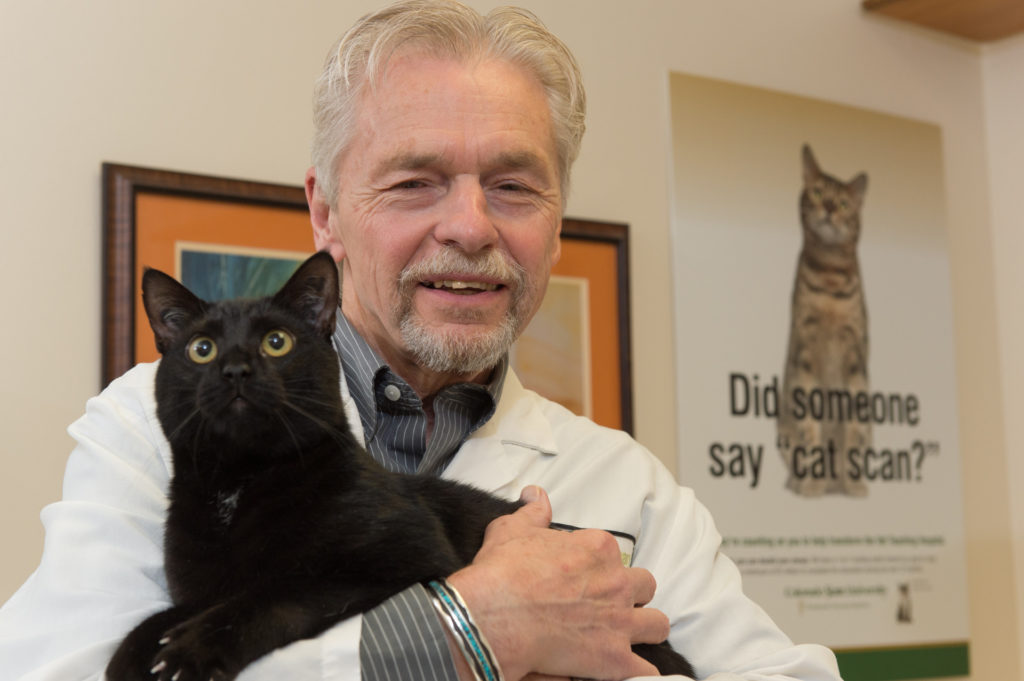
The vaccine work came from my interest in how do we get sick, where do infections come from? I got interested in cats as animals, and why they were sick and we couldn’t cure them. Fast forward in time, I realized some of those cats had feline leukemia virus infection.
Feline leukemia is so interesting to a researcher because there is a tremendous amount of virus produced and a lot of the virus factories are in the bone marrow. The cells that are infected then carry virus proteins in them, circulating through the body. That led to my interest in fluorescence microscopy and the sort of wonder of being able to see which cells carried the virus.
It was so captivating to me because you could see it – this was like an art thing – you could see the blood cells, that were not infected, and you could see the glowing ones that were. And it just fascinated me. It brought together the visual and the infectious disease part.
It’s a long way from fascination to an actual vaccine that’s now used around the world. How did you get there?
We determined how the virus enters the body, how it is distributed in the cat, how it appears in the blood, which turns out happens after it makes its way to the bone marrow, and it infects the cells of the parents that are circulating in the blood. Those cells usually don’t live a very long time, but more are produced all the time in a normal body, and they all carry the feline leukemia virus. So that virus makes its way to the mucous membranes like the salivary gland and the lining of the urinary tract, so cats shed a lot of virus. That’s how we found how cats transmit the virus so readily, it’s through licking and shedding the virus in urine and feces. So it’s transmitted like a respiratory virus. But at the time there was no other retrovirus that was transmitted in an influenza-like way.
Through a chance collaboration at a feline leukemia virus meeting, I met James Mullins, who was a molecular biologist at Harvard out there walking around in the surf during a break. We got to talking and it turned out he was the first person, with a colleague, to molecularly clone the feline leukemia virus.
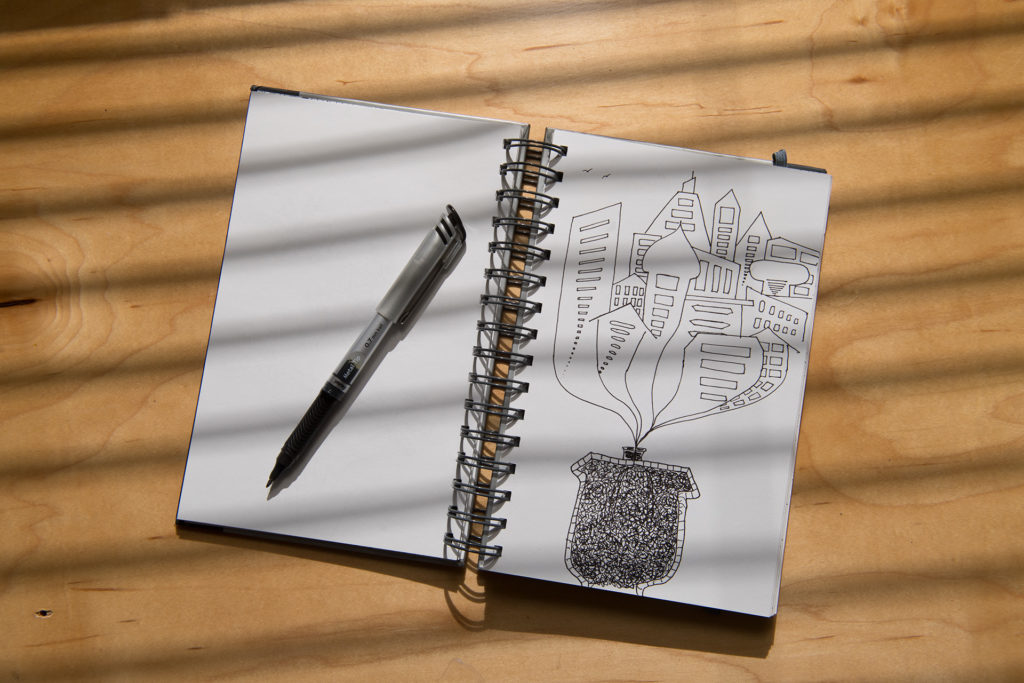
They cloned the DNA genes that made the virus RNA, and retroviruses then infect new cells, translate the viral RNA to DNA, which, amazingly, gets inserted into our cells’ DNA. This is a great and terrifying story. The virus becomes part of your genetic inheritance. The great thing that Mullins discovered, was that if you can clone the virus DNA, you can fingerprint the virus and you can distinguish one virus from another, then you can discover the anatomy and the history of viruses by what their DNA fingerprint is.
The important thing was to clarify at the molecular level that there was one dominant feline leukemia virus. That one is pretty sturdy and spreads best in the cat’s body and it’s the one that the cats excrete and transmit. It also turns out that there are mutations in that virus that lead to other virus variants, other versions. They’re not so great at replicating, but they’re better at doing bad things to cells. It’s a combination that gets replayed as cats get infected.
We realized this is the virus, type A, that is the most important one for cats to be immune to. Because we had this immunofluorescence assay, we realized that cats were exposed to feline leukemia virus, but not all of them got sick. In my mind that meant you could vaccinate cats if you could heighten their immune response so that not just a small number would resist the infection. We produced the virus in cell culture, inactivated it chemically, and mixed with an immune stimulant called an adjuvant, so that was a vaccine, it was a very simple vaccine.
How did you transition to prion research?
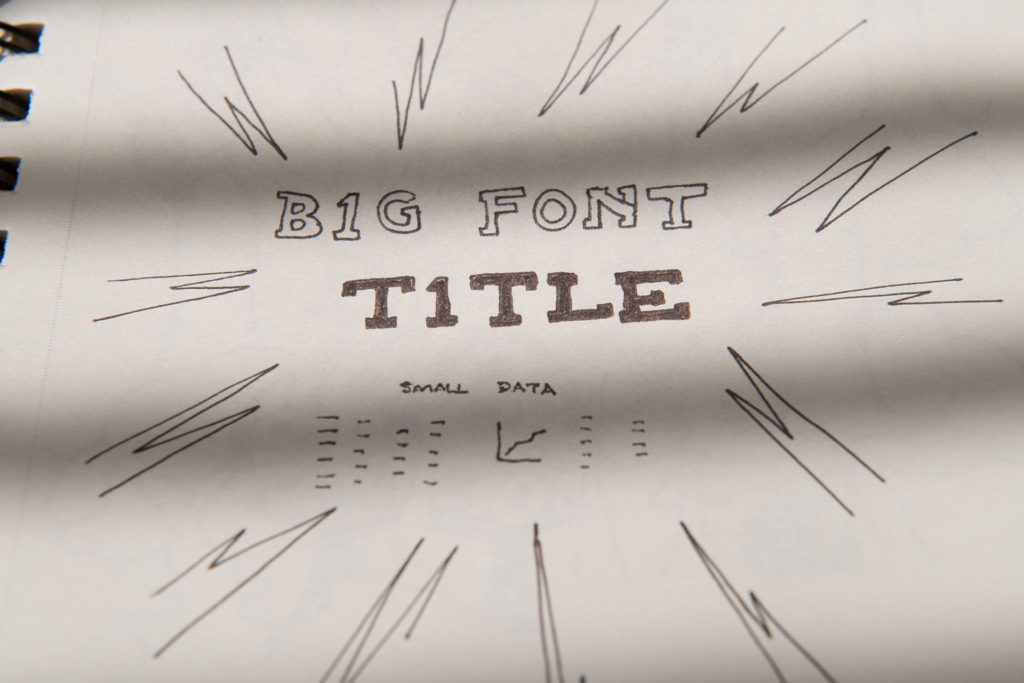
That’s the greatest thing about an academic job–the students, who are smart, young and enthusiastic. They have the energy and ideas. A student, Christina Sigurdson, was working on a pathology residency in the College of Veterinary Medicine and Biomedical Sciences, and was looking for a mentor. She wanted to work on wildlife diseases, and particularly chronic wasting disease of deer, because this area is the epicenter of that disease.
I said “that’s great, I’m flattered, but as you know we work on real pathogens like viruses that have foreign nucleic acids, and, I don’t know anything about prions.”
This is the power of a really smart, ambitious, energetic student. She simply got me interested in Chronic Wasting Disease. Which I discovered is very much like the feline leukemia virus in many ways. One key as an assay that could be performed on the tonsil of deer was developed by Terry Spraker at CSU and Katherine O’Rourke at Washington State University. It made possible detecting CWD by tonsil biopsy. It allowed them to stain the brain for the same thing and other tissues, and they saw there were prions in the tonsils and the lymph nodes. That led to the idea that the asymptomatic deer had prions in their lymphoid system before they went to the brain.
We wanted to figure out how deer were infected and essentially we’re still working on that in the Prion Research Center. We (Christina Sigurdson and CSU’s Candace Mathiason) showed deer were infected by oral exposure long before prions enter the brain.
What are prions and why we should study them?
Prions are misfolded versions of normal proteins that are present in many cells of the body, but especially brain and lymphoid tissues.
We are asking is there any way to predict or stop the transmission of CWD to humans? Always in science, things that are developed to understand one thing might be cross-applicable to something else. And if it infects other animals, that would be bad.
So then you’re just screwed?
You are. It’s like a zombie story, that old science fiction movie, “Invasion of the Body Snatchers.” It is your protein but it is not, it is turned into a monster but you can’t see it because it is still wearing your body.
Wasting disease enters the body from the mouth through the mucous membranes around the tonsil to the lymph nodes, and that’s where it replicates. It’s where foreign antigens go if the immune system is going to respond to them. Cells catch them, recognize them as “we ought to eat this or do something with it,” we call those macrophages or dendritic cells. They traffic to the lymph nodes, which is where the immune system decides how to deal with foreign things. If those cells don’t digest it on the spot, part of their job description is “I gotta take this to headquarters. We gotta do something about this.”
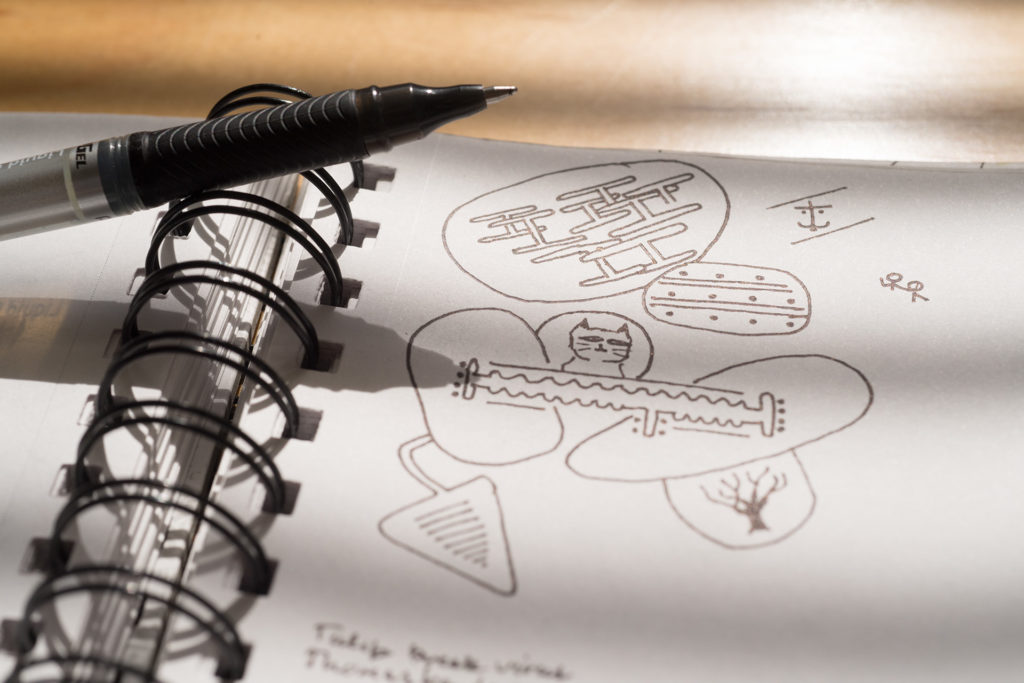
So they take “it” to the lymph node and transfer it to a follicular dendritic cell that processes it. It’s sort of like a command center: “Whaddaya got? Looks foreign, we need to hand this off to cells who can do something about it.” They might inform a T cell or if they need to make a complicated immune response to this with antibodies, they would hand this off to a B cell. They’re the guys that do stuff. That’s how you would start an immune response to a bacterial or viral antigen.
In prion disease, the same pathway is taken — usually the macrophage carries it to a control center. The follicular dendritic cell looks at it and instead of processing it for delivery, the thing starts transforming the dendritic cell’s normal prion proteins to the zombie forms. The follicular dendritic cell then transfers the zombie protein to a B cell who is there to get its orders, “what’s the next thing I need to make antibodies to?” Instead, it gets a load of prions and it goes off somewhere else in the body, as they are programmed to do, and spreads prions.
So it’s the zombie body snatcher?
Right, it’s in disguise. Meanwhile, nobody is really recognizing this as abnormal and they’re passing it on like you would a computer virus. This is a dramatized version of how I sometimes teach prions. It sounds like a process humans are familiar with. Students will remember because they sure know zombie stories.
What would be the definition of “ok, we’ve conquered this”?
Something we could put in a bottle. I’ve only had one thing like that, and that was feline leukemia vaccine.
Here’s the kicker about prions. Even though they’re misfolded versions of normal proteins, the immune system seems not to see them as abnormal or foreign, so there’s no known immune response to prion infection. This is a BIG challenge.
Is it hard to translate science in this way?
Yes, how do you translate science in a way that is not too inaccurate and crude, or too much fantasy, in order to make it understandable and interesting? It has be some of both or people will not listen. We’re all the same, we learn in the same way, just that scientists have been working on one thing at different or more esoteric levels.
Scientists and teachers have to find ways to use those kinds of analogies. We need to learn from an example. That’s why we use stories, we are hard-wired to want stories, but it has to be a story that involves enough common experience to be able to relate to it.
There’s so much we don’t know!
Life is humbling, and science is even more humbling. We just skate around on the surface. There’s so much below the ice to look at and understand.
We have to try to keep looking and understanding how things, animals, people work if we are going to try to exist as productively as we can, do as little damage as we can, and take care of the world that we are using up.